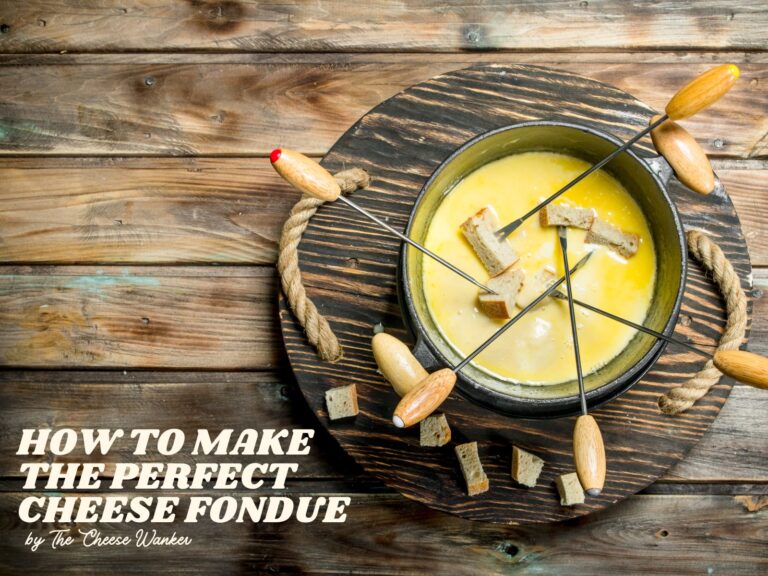Whether you like your pizza with a thin or thick base, there’s no denying that cheese is the most important ingredient. And choosing the right cheese is key to making the perfect pizza. Read on to discover our top 13 Italian cheeses for pizza.

SEE ALSO: The most iconic cheesy dishes from all around the world →
Our rationale
Before we launch into our mouth-watering list of cheeses, let’s quickly touch on how we chose which ones to include. The two main factors for us were: flavour and texture. Of course, the cheese must taste pretty damn amazing! But, just as important as the taste, is the cheese’s ability to melt and create a cheese pull. So, without further ado, let’s launch into our list of the best cheeses for pizza.
1. Buffalo Mozzarella
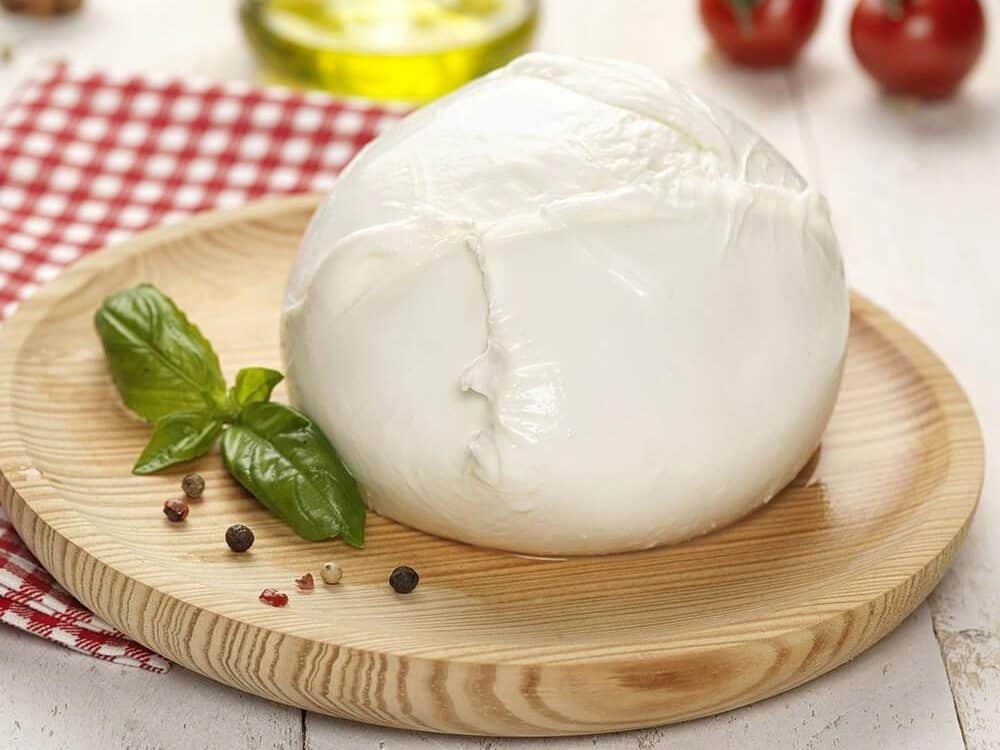
When we think pizza, Mozzarella is the first cheese that comes to mind. Without a doubt, America’s favourite cheese is the most popular pizza topping around the world. Mozzarella is a delicate traditional pasta filata (stretched curd) cheese that hails from Naples in Southern Italy. Historically, the local cheesemakers made it using buffalo milk. And Mozzarella di Bufala is our number one pick for pizza.
Thanks to its mild buttery flavour and mouth-watering stretchy texture, Buffalo Mozzarella will take your pizza to the next level. For generations, Italians have used Mozzarella and the next three cheeses on our list to make the classic Quattro Formaggi Pizza.
2. Gorgonzola Piccante
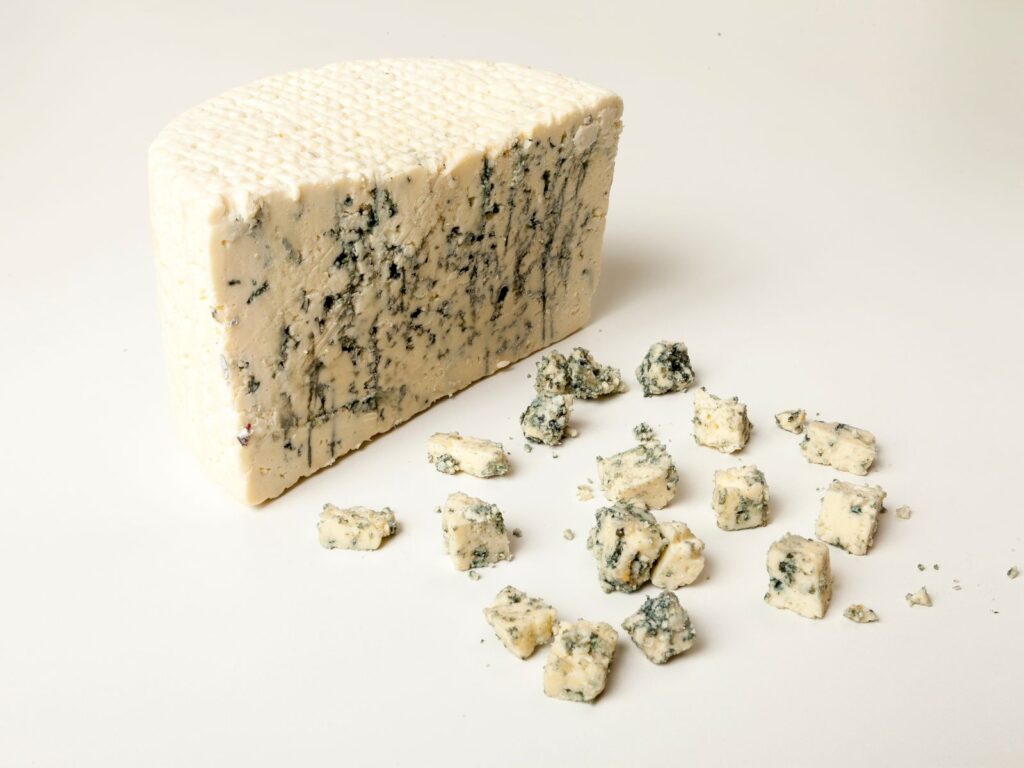
Gorgonzola is a blue cheese that finds its roots in the small Italian town of Gorgonzola. Actually, this quaint township is located in the larger Milan metropolitan region. Back in the day, cow herders would stop in the village to milk their cows on their way up or down the Italian Alps. This would happen during spring and autumn.
Our pick for pizza is the slightly more mature and spicy Gorgonzola Piccante. Also known as Gorgonzola Media or Piccola, this blue cheese weighs between 6-12 kg and ages for a minimum of 60 days. Gorgonzola Piccante will add a little spiciness to your pizza and playfully contrast the Mozzarella with a more savoury and complex flavour palette.
3. Fontina
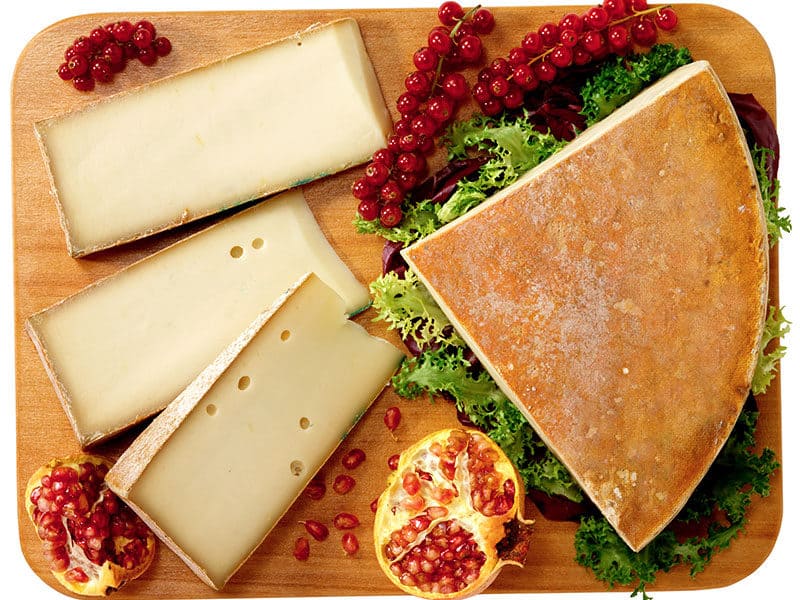
The third cheese in Quattro Formaggi is a pressed uncooked cheese called Fontina. Fontina finds its roots in Aosta Valley in the Italian Alps and dates back to the 12th century. To this day, cheesemakers produce wheels of Fontina using unpasteurised cow’s milk from a single milking.
Similar cheeses are also made in Denmark and Sweden but cannot bear the DOP stamp Fontina Valle D’Aosta and the image of the Matterhorn.
Aged for 90 to 150 days, Fontina’s rich and creamy texture melts gorgeously when heated. And its sweet, buttery and nutty flavour beautifully complement other cheeses such as Mozzarella when used as a pizza topping. Because of those characteristics, Fontina is often compared to Raclette.
4. Parmigiano Reggiano
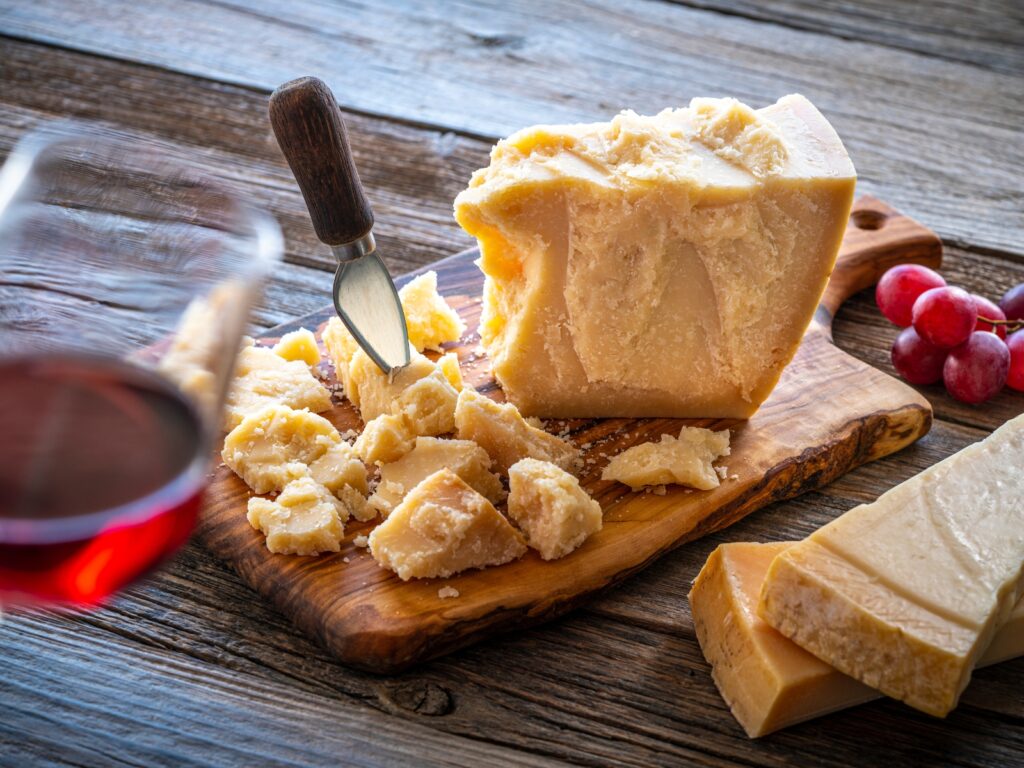
The final cheese used in Quattro Formaggi Pizza is Italy’s uncontested King of Cheeses. Parmigiano Reggiano is a traditional raw cow’s milk pressed cheese from northern Italy. Effectively, it dates back to the Middle Ages when Benedictine and Cistercian monks were the first producers.
Unsurprisingly, this legendary cheese excels both as a table cheese and an ingredient in cooking. Coupled with its fruity and nutty aroma is a delectable flavour palette that includes savoury and umami. In addition to this, it leaves a wonderful savoury aftertaste which lingers for long after you’ve devoured the cheese.
Some great dishes to add this cheese to are a rocket and pear salad and your favourite pasta. And it will add a playful crunch to the top of your Quattro Formaggi pizza (or any pizza actually).
5. Fior di Latte
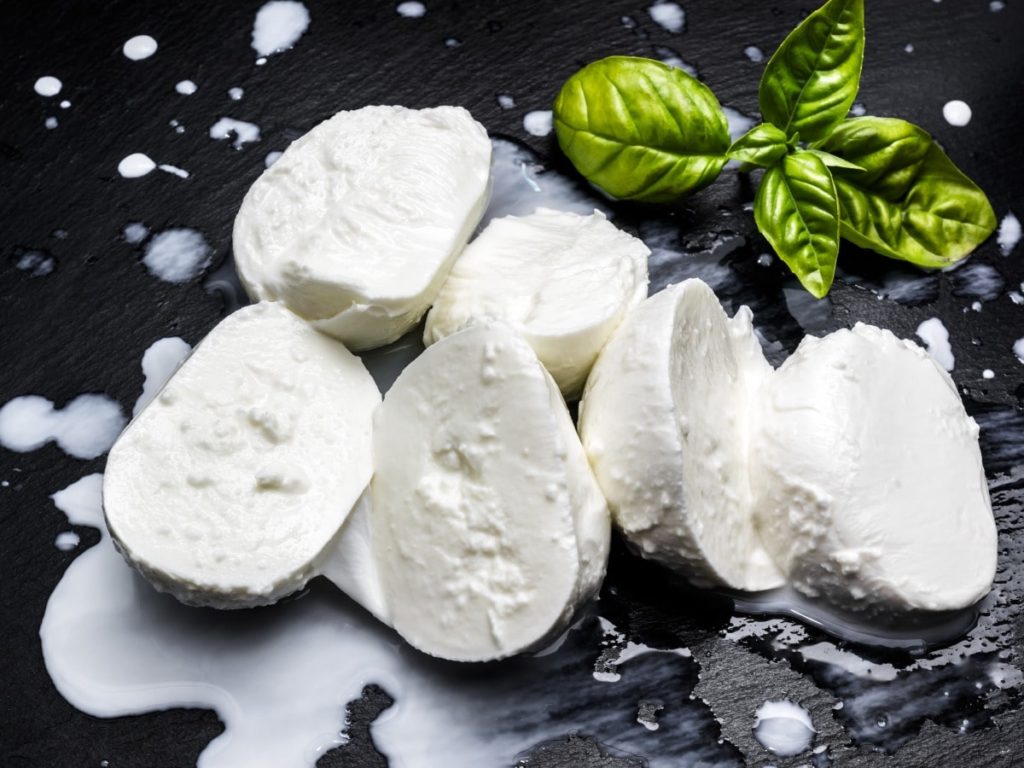
The second pasta filata cheese on our list is Fior di Latte. Fior di Latte is a fresh soft cheese that originates from Agerola, on Italy’s Amalfi Coast. Unsurprisingly, people often confuse this cheese with the more popular, Mozzarella.
While they both find their roots in the Campania region of southern Italy, they differ in one very important manner. Fior di Latte is traditionally made using exclusively cow’s milk whereas Mozzarella is traditionally made with buffalo milk.
Because it is made with cow’s milk, Fior di Latte has a more subtle and lighter flavour than Mozzarella. Furthermore, this cheese has a higher moisture content and, as such, has a softer texture than its more well-known counterpart. Without a doubt, Fior di Latte is best eaten within a few days of production. Just like Mozzarella, it is an excellent topping for pizzas.
6. Pecorino Romano
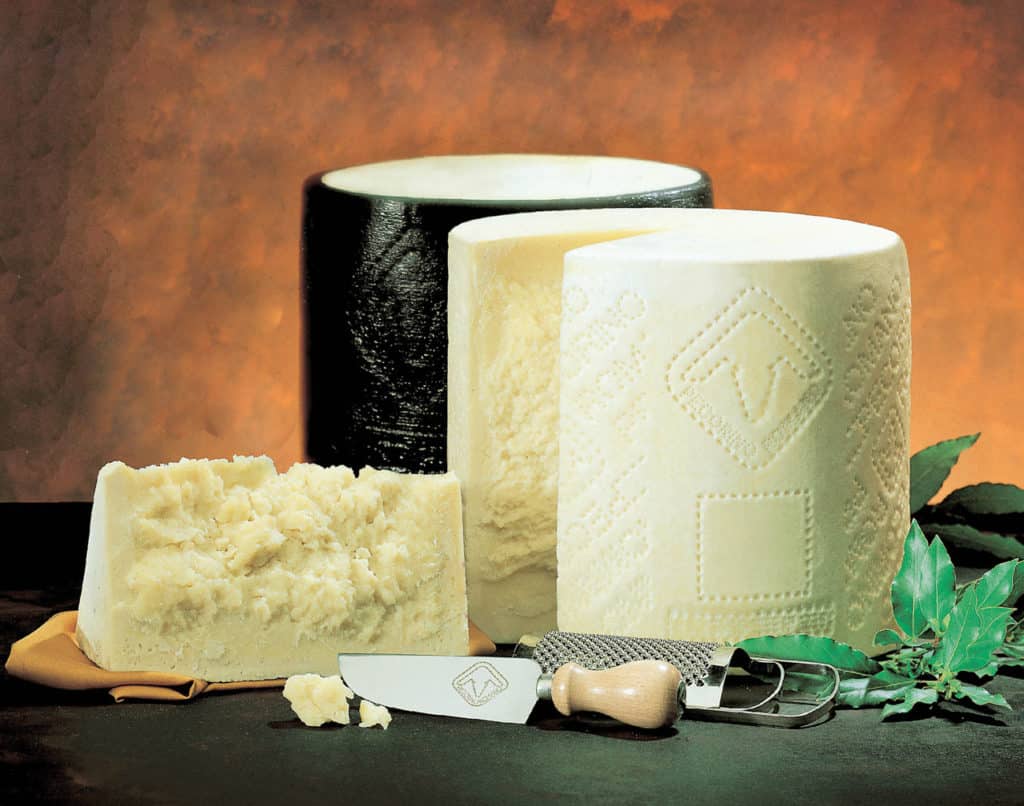
At number 6, we have the first sheep’s milk cheese on this list. Pecorino Romano is a pressed cooked cheese that originates from the Lazio region of central Italy. Actually, this grana-style cheese is one of Italy’s oldest cheeses with records of its existence dating back to the 2nd century. Indeed, the Roman legions used it as a staple in their diet alongside bread and farro soup.
You will want to choose a mature Pecorino (over 8 months) for the best crumbly texture. Undoubtedly, Pecorino Romano is an excellent table cheese, particularly when combined with fresh vegetables and fruit.
Having said that, Italians also enjoy it grated on classic Italian dishes such as Bucatini all’Amatriciana, Spaghetti Cacio e Pepe and Prosciutto, Truffle & Pecorino Pizza.
7. Crescenza
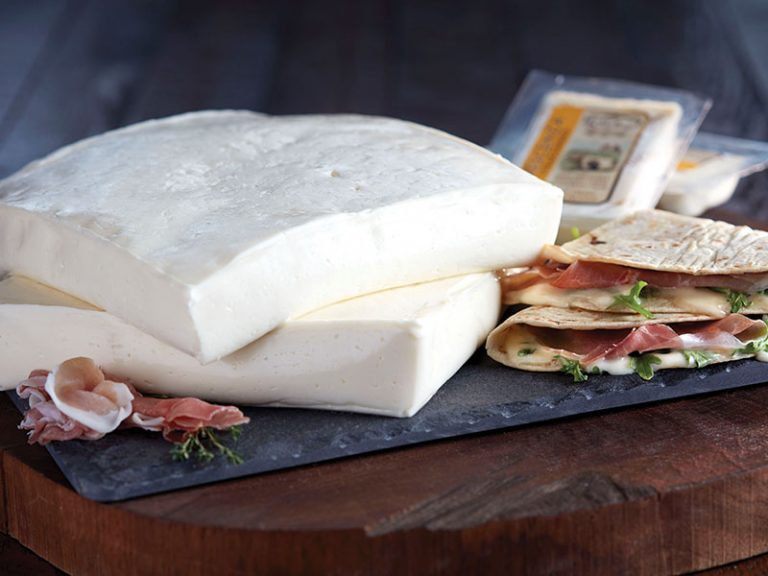
Crescenza is a very popular Italian cow’s milk cheese, typical of the northern Italy provinces including Lombardia, Veneto and Liguria. Actually, crescenza is an Italian word that means “growth” and this cheese is called so because it rises as it ripens.
This delicate Italian cheese is very soft with a creamy, spreadable texture. Moreover, its flavour is typically mild and fresh. As a result, this rich fresh cheese can be enjoyed on its own.
But if you want a pairing, it excels when added to a fresh rocket salad and prosciutto. Furthermore, the locals often add Crescenza to their pizzas, together with rocket and prosciutto.
8. Robiola
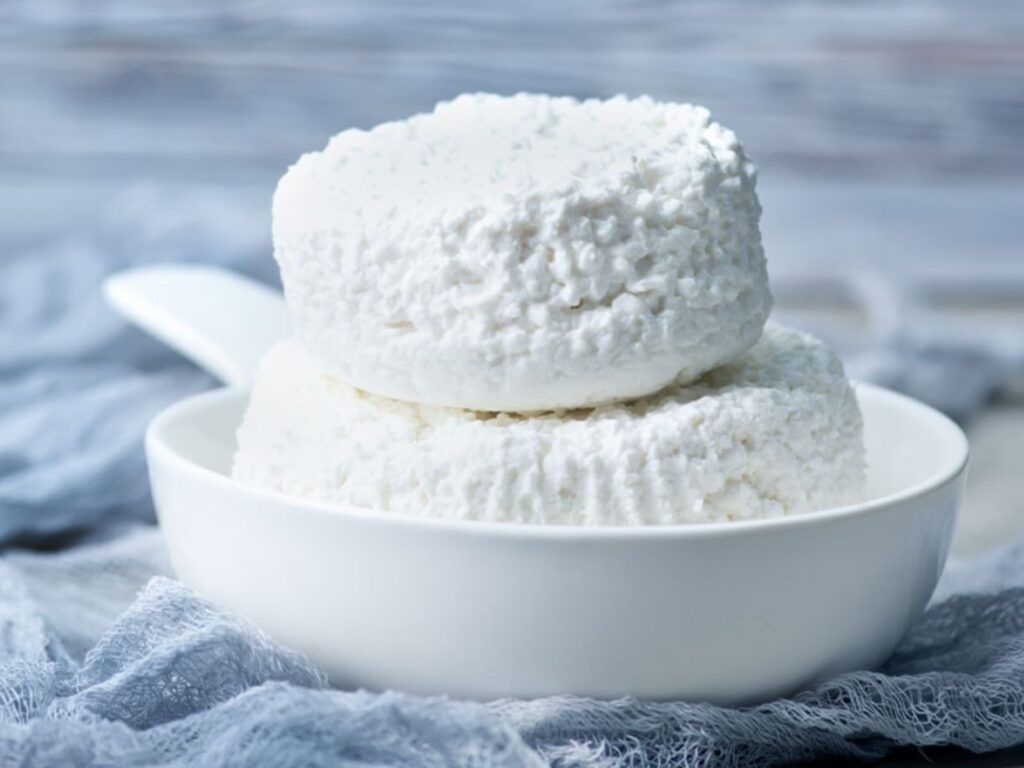
Our first goat’s milk cheese comes in at number 8. Robiola is a soft cheese that can be consumed fresh or aged with a delicate white mould rind. It finds its roots in Roccaverano in the Piemonte region of northern Italy.
The earliest versions of this cheese were made using raw goat’s milk but more modern versions such as La Tur use a mixture of milks (cow, goat and sheep). And, more often than not, are made with pasteurised milk.
A young (fresco) Robiola is the best version for pizza. The reason for this is that its mild flavour and creamy texture perfectly round up a pizza that is topped with extra virgin olive oil and freshly ground pepper. If you want a little bit more complexity, add in some Gorgonzola Piccante or Pecorino Romano.
9. Taleggio
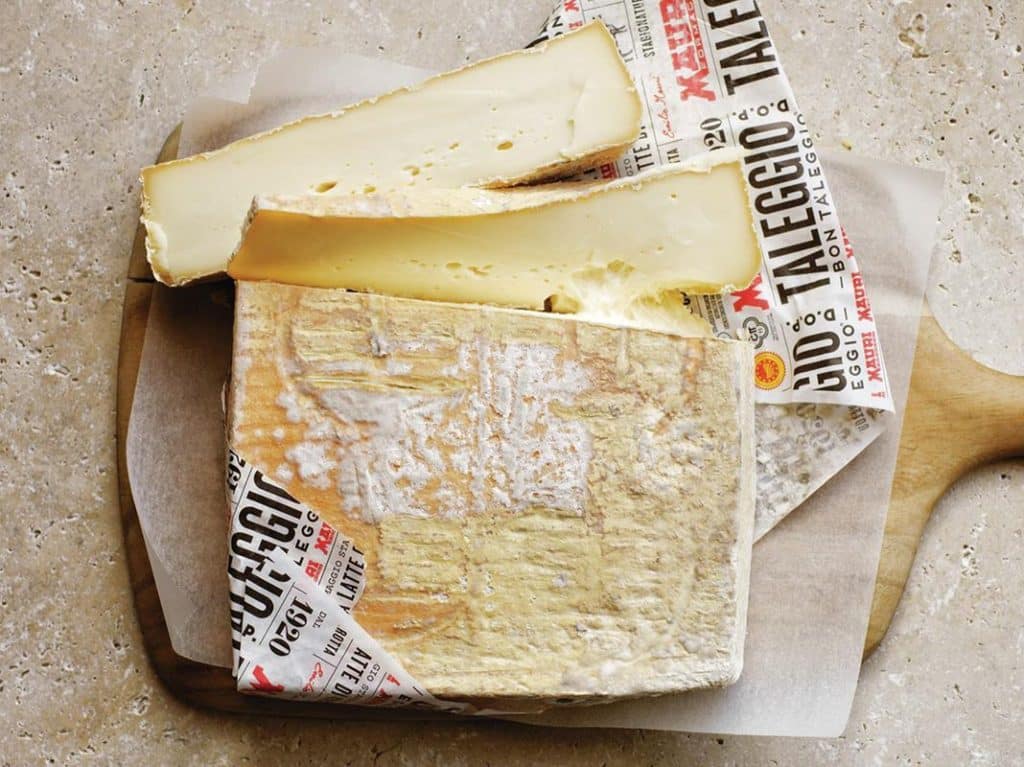
Taleggio is a soft washed rind cheese which dates back to the 10th century. Actually, local artisans named the cheese after its area of origin, Val Taleggio. When it is ready for consumption, Taleggio has a thin, soft pinkish rind with patches of grey-green mould.
When ripe, the light-yellow paste softens to become creamy and oozy, even at room temperature.
Overall, Taleggio has a mild yeasty aroma and a rich flavour of cured meats and truffles. Without a doubt, Taleggio is great on a cheese board. Also, Taleggio melts beautifully on top of any pizza. But our favourite combination is, hands-down, Taleggio and brown mushrooms.
10. Provolone Dolce
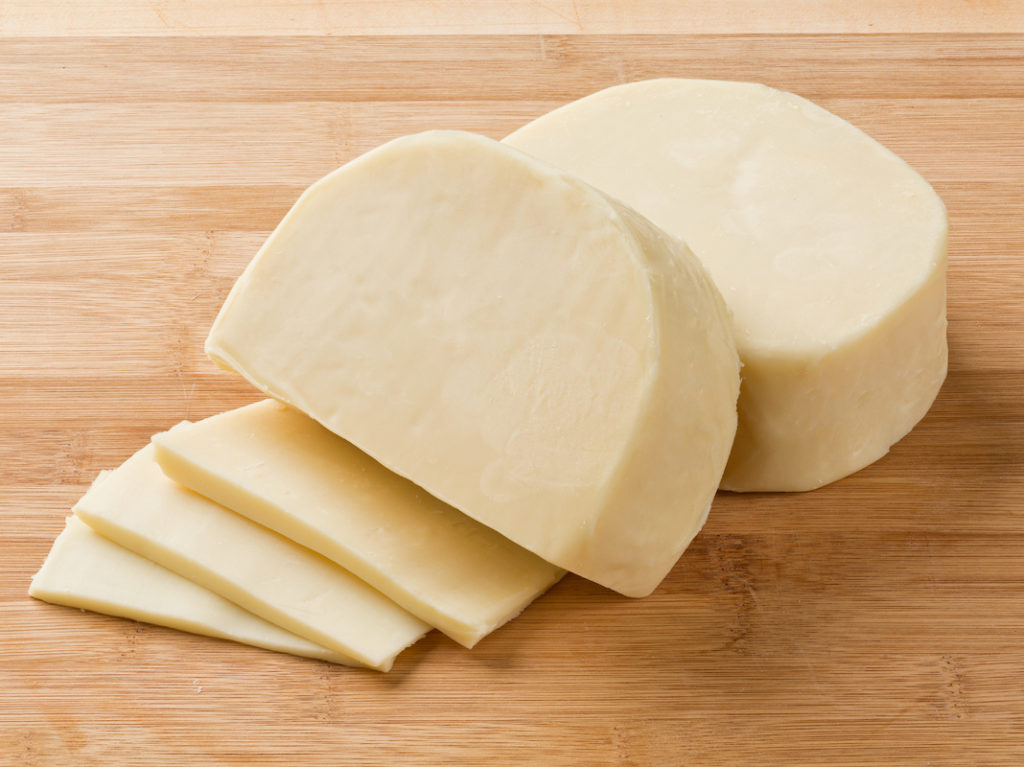
Provolone is an aged pasta filata cheese that finds its roots in the Po Valley of northern Italy. The origins of this Italian cheese date back to Cistercian monks in the territory between the rivers Lambro and Adda. Aged for a minimum of 10 days, Provolone Dolce is the younger version of this cheese.
Unsurprisingly, the Provolone Dolce has a mild flavour profile. On the palate, you will detect hints of nuts and salt, with a smooth texture. When melted, this cheese develops a spectacular cheese pull. Because of this, it is commonly used in grilled cheese sandwiches and, of course, as a pizza topping.
11. Ricotta

Ricotta is a fluffy white fresh cheese that originates from Italy. Traditionally, it is made from the whey that is left over from making other cheeses. It gets its name from the Italian word for “recooked”. This is because the whey is cooked twice when making Ricotta.
Ricotta is creamy white in appearance and has a slightly sweet flavour. It is a great addition to a cheesy pizza on its own or combined with a more complex cheese. To balance the flavour, you can also use Gorgonzola Piccante.
And, if you want more of a cheese pull, you can also add Fontina, Provolone Dolce or Taleggio. Finally, the traditional pairing for Ricotta on pizza is spinach.
12. Caciocavallo
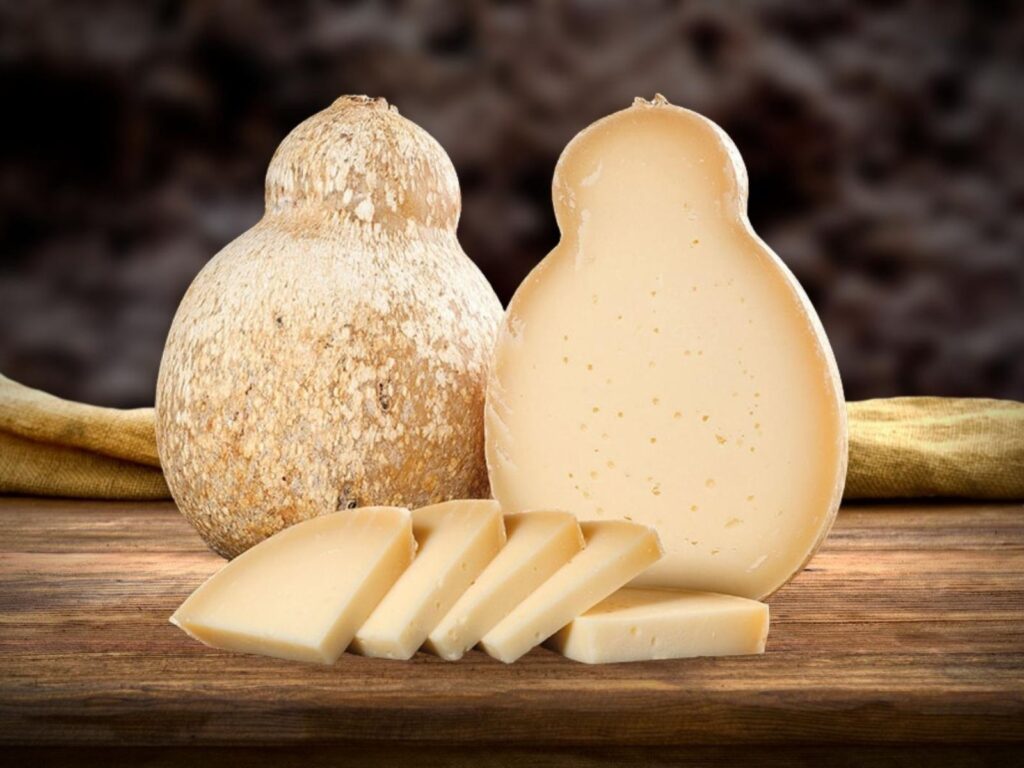
Our final pasta filata cheese comes from southern Italy, more specifically the Apennine Mountains. Shaped like a tear-drop, Caciocavallo (translated to “horse cheese” in English) gets its name from the maturation technique used by local cheesemakers. Indeed, they would tie two cheeses together with a rope and straddle them on a horizontal stick.
In many ways, Cacciocavallo combines the qualities of young pasta filata cheeses such as Mozzarella and the complexity and depth of flavour of more mature cheeses such as Provolone Piccante and Pecorino. As a single ingredient pizza topping, Caciocavallo can produce a cheese pull comparable to Mozzarella with an explosion of flavour.
Add in some Spanish onion, Roma tomatoes and extra virgin olive and you will have yourself a spectacular pizza!
13. Asiago
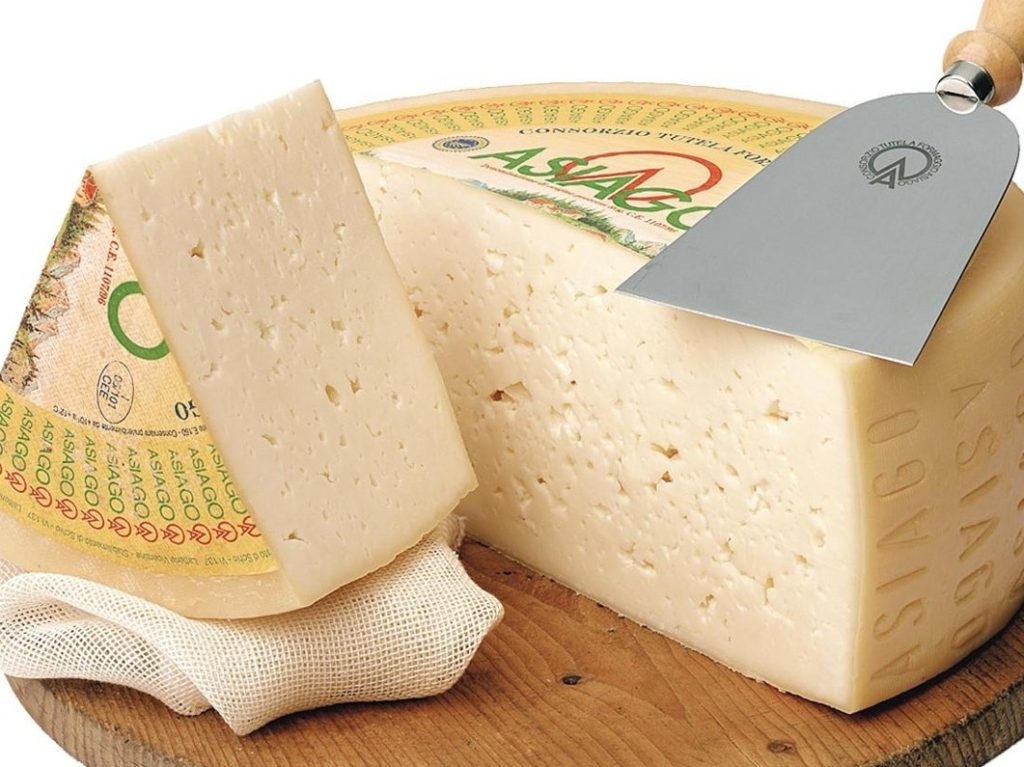
With Asiago, we might just have left the best Italian cheese for last. This aged cow’s milk cheese bears a DOP stamp that limits its production to specific regions of northern Italy. Depending on the cheese’s age (one month to two years), Asiago can demonstrate a range of textures and flavours.
For your pizza, you will want an aged, pressed Asiago called Asiago Pressato. Here you can expect a pale-yellow paste with a nutty and yeasty aroma. Grated Asiago will look quite similar to Parmigiano Reggiano and Pecorino Romano but will have a slightly different flavour profile. Look out for sweet, buttery and tangy notes with a savoury aftertaste.
Top your pizza with Asiago Pressato, smoked bacon, fig preserve and a drizzle of balsamic reduction for a mind-blowing combination.
Best cheeses to top your pizza
Thank you for reading our post on the best cheeses to use on pizza. As you can see, there are a number of spectacular options available. And the final decision comes down to the balance of flavour and texture you’re seeking. What’s your favourite cheese for pizza? Let me know in the comments.

